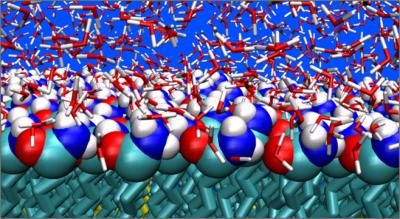New buffer resists pH change, even as temperature drops
Advertisement
Researchers at the University of Illinois have found a simple solution to a problem that has plagued scientists for decades: the tendency of chemical buffers used to maintain the pH of laboratory samples to lose their efficacy as the samples are cooled. The research team, headed by chemistry professor Yi Lu, developed a method to formulate a buffer that maintains a desired pH at a range of low temperatures. The study appears this month in Chemical Communications.
Scientists have known since the 1930s that the pH of chemical buffers that are used to maintain the pH of lab samples can change as those samples are cooled, with some buffers raising and others lowering pH in the cooling process. Freezing is a standard method for extending the shelf life of biological specimens and pharmaceuticals, and biological samples are routinely cooled to slow chemical reactions in some experiments. Even tiny changes in the acidity or alkalinity of a sample can influence its properties, Lu said.
"We like to freeze proteins, nucleic acids, pharmaceutical drugs and other biomolecules to keep them a long time and to study them more readily under very low temperatures using different spectroscopic techniques and X-ray crystallography," Lu said. "But when the pH changes at low temperature, the sample integrity can change."
Graduate student Nathan Sieracki demonstrated this by repeatedly freezing and thawing oxacillin, a penicillin analog used to treat infections. "After one freeze-thaw 50 percent of the drug was dead in several of the buffers investigated," Sieracki said. Sieracki was able to demonstrate that the loss of activity was due to changes in pH and not a result of the temperature changes.
To find a buffer that would maintain a stable pH at varying temperatures, Sieracki first evaluated the behavior of several commonly used buffers over a range of temperatures. He saw that some buffers became more alkaline at lower temperatures while others grew more acidic. These observations led to an obvious methodology: "Why don't we just mix them together?" Sieracki said.
Little by little, he varied the proportions of the combined buffers until he found a formula that exhibited minimal pH changes at a variety of temperatures. Instead of registering changes of 2 or more pH units while cooling, which was typical of some standard buffers, the new formula changed less than 0.2 pH units during cooling, he said. The creation of a temperature-independent pH (TIP) buffer could have broad implications for new - and previously published - research, Lu said. The new buffer is immediately useful for biological research, and Sieracki said he is confident that a similar buffer could be made for use in many fields, such as biochemistry, biophysics, chemical biology and biomedical research.
























































